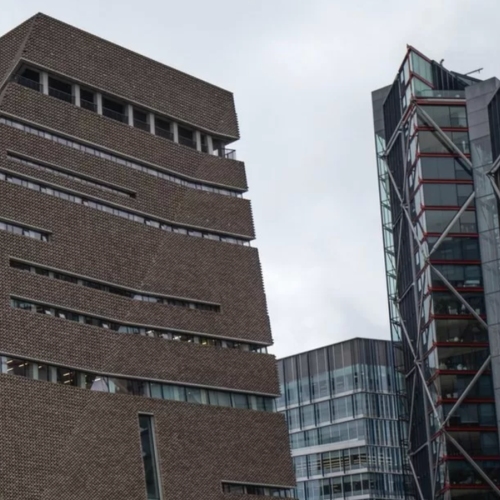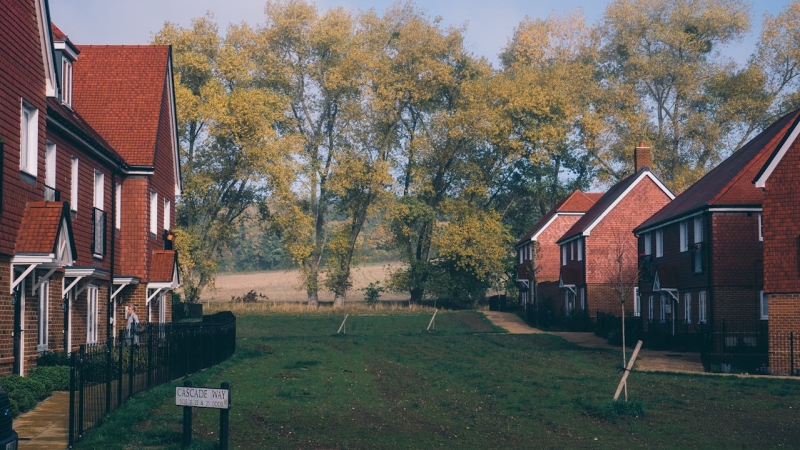We look below at Brown v Ridley [2025] in which the Supreme Court decided that the ten years of reasonable belief of ownership required when making an adverse possession claim in respect of registered land, can be any ten years within the period of adverse possession. It does not need to be the ten years immediately before the date of the application.
The decision is of considerable practical importance.
WolfBite
• A person who is not the legal owner of land can become the legal owner through adverse possession, by possessing the land in a particular way, for a particular period of time.• Under the process in the Land Registration Act 2002 that applies to registered land, the applicant will generally need to prove ten years’ adverse possession and that at least one of three specified conditions apply.
• One of the conditions commonly relied on is where the applicant was mistaken as to the position of the boundary with the adjacent land. They must show that for at least ten years they reasonably believed the land in question belonged to them.
• The wording of the statute concerning the period of reasonable belief can, however, be read in two different ways.
• In a previous case, the Court of Appeal had assumed that the wording meant that the applicant had to have held the reasonable belief for the ten years immediately before making their Land Registry application; they therefore had to make their application straightaway once their reasonable belief ended.
• The Supreme Court has confirmed that that interpretation is not correct, and that the ten years of reasonable belief can instead be any ten years within the period of adverse possession.
• The decision may lead to more adverse possession claims being made, but removing the need for, and threat of, immediate litigation should give parties more time and space to resolve such disagreements between themselves.
What is adverse possession?
Adverse possession is a way in which a person who is not the legal owner of land can become the legal owner by possessing the land in a particular manner, for a particular period of time.The person seeking to become the legal owner is often referred to as a “squatter”. The squatter needs to show that they have been in possession of the land continuously for a requisite period of time without the owner’s consent, and that they intended to possess the land during that period in their own name, on their own behalf and to the exclusion of all others.
There are two processes for acquiring land by adverse possession, each requiring a different period of adverse possession.
There is one process that applies to unregistered land (and to some claims relating to registered land where the applicant relies on a period of possession before 13 October 2003). Under this process, the applicant has to show that they have been in possession for at least 12 years.
There is a separate process that applies to registered land which came into force on 13 October 2003. Under this process, the applicant has to show a period of at least ten years’ possession.
The second process was created by the Land Registration Act 2002 (LRA 2002).
The LRA 2002 was intended to further the objective that registration alone should confer title to land. This, in turn, supports a more effective system of electronic conveyancing. The aim was, and remains, that the register kept by the Land Registry should be a complete and accurate reflection of the state of the title to land. The doctrine of adverse possession did not, however, fit easily with these objectives.
The second process introduced by the LRA 2002 was designed to protect the interests of registered owners and made it much harder for squatters to claim adverse possession.
Adverse possession under the Land Registration Act 2002
Under the LRA 2002, a squatter may apply to be registered as the owner of the land after ten years of adverse possession. The process is mainly set out in Schedule 6 of the Act.Once the squatter has made their application, the Land Registry will notify the registered owner along with others who have an interest in the land.
If the application is not opposed, the squatter will be registered as the owner in place of the former registered owner.
If, however, the current owner (or other interested person) serves a counter-notice, the application will be rejected unless the squatter can prove that it has been in adverse possession and can establish one of the following three conditions:
• The “equity” condition – this is where the squatter says that the registered owner allowed them to believe that they owned the land, they acted in some way to their detriment based on that belief and it would be unconscionable for the registered owner to deny the rights they were led to believe they had.
• The “some other reason” condition – it is a little unclear what this condition might cover, but the traditional example that is given is where the squatter had contracted to buy the land and paid the purchase price in full but where the legal title was never transferred to them (although the Supreme Court has cast doubt on this example).
• The “reasonable mistake about the boundary” condition – this applies where the subject land is adjacent to land owned by the applicant; the exact boundary line has not been determined; “for at least ten years of the period of adverse possession ending on the date of the application” the applicant (and any predecessor) reasonably believed that the subject land belonged to them; and the registered owner’s land was registered more than a year before the application.
If the squatter’s application is refused, but they remain in adverse possession for a further two years, they can make a second application.
The other way in which a claim for adverse possession can come about is if the registered owner starts possession proceedings against the squatter. In this scenario, the squatter may be able to defend the possession claim on the basis that it has been in occupation for ten years and can establish one of the three conditions above.
If a squatter has already been evicted by the registered owner, but without a possession order having been made, they can also make an adverse possession application within six months of being evicted.
What was the issue in Brown v Ridley?
This case concerned the third condition (reasonable mistake about the boundary).Specifically, the Supreme Court had to determine what the phrase “…for at least ten years of the period of adverse possession ending on the date of the application…” means.
It was common ground that this phrase could be read in one of two ways, namely that either:
(A) the period of reasonable belief must be a period of at least ten years ending on the date of the application to the Land Registry;
or
(B) the reasonable belief can be any ten-year period within a longer period of adverse possession that ends on the date of the application.
To put it another way, does the applicant need to still have a reasonable belief that the subject land belonged to them immediately before making their Land Registry application or would it be fatal if their reasonable belief had ended at some earlier point?
This was relevant in this case because it had been found that the applicants had likely become aware that part of the garden was not within their own registered title when they submitted a planning application in February 2018. It was at that point that their reasonable belief ceased.
They did not, however, start their adverse possession application until December 2019, some 21 months later. Accordingly, they did not still hold their reasonable belief immediately before submitting their application to the Land Registry; their reasonable belief had ended a very long time before. If interpretation (A) was correct, their application must fail.
The First-tier Tribunal considered that interpretation (B) was correct, and upheld the claim to adverse possession.
The Upper Tribunal, however, allowed an appeal. This was on the basis that it believed that it was bound to follow an earlier decision called Zarb v Parry [2011] in which the Court of Appeal had assumed that interpretation (A) was right. The Upper Tribunal expressed its view, however, that the Court of Appeal had been wrong on this point.
It was therefore for the Supreme Court to decide which interpretation was correct.
What did the Supreme Court decide?
The Supreme Court approached this as a matter of statutory construction, by seeking to ascertain what Parliament intended by the language it had chosen to use, in the context of the legislation as a whole.The wording of the “reasonable mistake as to the boundary” condition had to be read in light of Parliament’s intention when it passed the LRA 2002 to confine the right to apply for registration based on adverse possession more closely than under the old regime, but not to remove those rights altogether.
Crucially, the Supreme Court could not see what purpose interpretation (A) would serve beyond interpretation (B).
Both (A) and (B) effectively exclude squatters who are seeking to possess land with a view to taking it from others where they know that they are in possession without any right to do so (a person that knows they are trespassing will not have a “reasonable belief” as to ownership).
It was obvious that the typical applicant wishing to rely on the mistaken boundary condition would only consider making an application for registration once disabused of their reasonable belief in their ownership, and they could not possibly expect to do this on the very same day, which is what construction (A) appeared to require.
An adverse possession application cannot be put together in an afternoon.
The potential applicant will need professional advice from surveyors and lawyers, not only about the strengths and merits of the application, but also about the costs and the risks of exacerbating poor neighbourly relations.
The applicant would also want to consider alternative dispute resolution with a view to hopefully avoiding protracted litigation.
This all takes time.
Losing the reasonable belief as to ownership may also come about in a variety of ways when there may be no dispute with the neighbour about the boundary. For example, as in this case, the discrepancy about the boundary had become clear from plans seen during the planning application, not from anything said or done by the neighbour.
The Supreme Court did not consider that Parliament could have intended that the squatter should be expected immediately to start a process likely to lead to a dispute at whatever point the reasonable belief fell away, as construction (A) would require.
Rather, the LRA 2002 expressly leaves the squatter free to choose between making its application for adverse possession, waiting to see if the neighbour evicts them or sues them for possession. Those were real choices that Parliament must be assumed to have deliberately made available for good reason.
It was argued that interpretation (A) was subject to, and could be saved by, the de minimis principle (the principle that the law ignores trifling and insignificant matters). Under this principle, it was argued, the law would not in fact require the squatter to make its application on the very same day that it ceased to have a reasonable belief that it owned the land in question, but would ignore a “trifling” period of one or two months so long as the application was made reasonably promptly.
The Supreme Court considered that there were various difficulties with that argument that were impossible to overcome, including the fact that where Parliament had considered that a grace period was required elsewhere in the LRA 2002 it had said so either expressly or by necessary implication.
Interpretation (B) did not suffer from the same difficulties.
The main argument against interpretation (B) was that it would allow the squatter to rely on a period of reasonable belief that might be quite some distance in time from the date of the Land Registry application, which could put the registered owner at an unfair evidential disadvantage. The Supreme Court considered that the answer to this was that the burden of proof was on the squatter to prove their case, not the registered owner, such that the problems associated with proving a historically remote period of reasonable belief fell mainly on the squatter. That should itself encourage the squatter to make its application sooner rather than later.
Construction (B) contains a built-in incentive for the squatter to get on with their application while the evidence is still reasonably fresh.
In any event, the Supreme Court considered that a careful examination of the words that Parliament had used tended to support construction (B). It believed that the words “ending on the date of the application” more naturally referred to the period of adverse possession, not the length of time during which the squatter must hold the reasonable belief.
The Supreme Court accordingly allowed the appeal.
The applicants were entitled to be registered as the owners of the disputed land.
Comment
The “reasonable mistake about the boundary” condition is very commonly relied on in practice.This condition is aimed at situations involving small pieces of land running along the boundary between two properties, where the boundaries on the ground do not coincide with the boundaries as marked on the Land Registry title plans (which invariably only show the general boundaries, not the exact position).
Problems with boundaries are often the cause of disagreements between neighbours, and can arise in various situations, for example on new-build estates where the title plans don’t match how the plots have actually been laid out, and rural land where fences, walls and bushes may have moved over time.
Such problems are often only discovered when one of the parties wants to do something with the land that they believe they own, such as construct a building or sell to a third party, at which point both neighbours may start to look more closely at their title deeds and historic plans.
Ultimately, the Supreme Court considered that it would be absurd if an adverse possession application had to be made on the very same day as the discrepancy as to ownership is discovered by the squatter or articulated by the adjoining owner, being the point at which the squatter’s reasonable belief is destroyed or rendered unreasonable.
This decision is therefore a victory for common sense. It is also of considerable practical importance.
Whilst the squatter should still act promptly when it discovers the issue, this judgment means that they will have more time in which to take proper advice and to explore other ways of resolving the issues whether through informal discussions or a more formal process such as mediation (which lends itself particularly well to this kind of situation). It should enable and encourage neighbours to attempt to de-escalate tensions, rather than forcing them into litigation that neither of them may really want.
However, it is regrettable that it has taken some 22 years from the introduction of the new process under the LRA 2002 to obtain certainty on this point. One wonders how many legitimate adverse possession claims have not been brought due to the previous uncertainties





